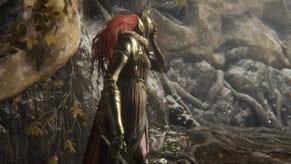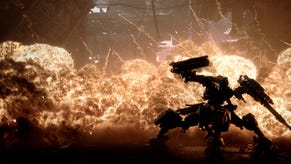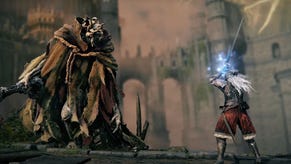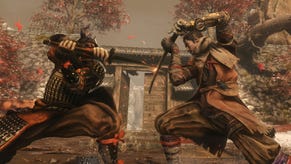Dark Souls Director Miyazaki on How Sekiro: Shadows Die Twice is a New Direction for FromSoftware
Sekiro: Shadows Die Twice director Hidetaka Miyazaki tells us about FromSoftware's new direction with its new action-adventure game.
This article first appeared on USgamer, a partner publication of VG247. Some content, such as this article, has been migrated to VG247 for posterity after USgamer's closure - but it has not been edited or further vetted by the VG247 team.
This weekend, FromSoftware revealed its mysterious new action-adventure game, Sekiro: Shadows Die Twice. While there are elements of FromSoftware's Soulsborne series in it, Sekiro is shaping up to be a much different animal. And who better to find out how than from Sekiro director and Dark Souls creator Hidetaka Miyazaki.
Miyazaki is taking up the director's chair for Sekiro. Despite directing both Dark Souls games and Bloodborne, Sekiro will be different and similar, if that makes any sense. At least that's the feeling I got after our interview at E3 2018 about Sekiro.
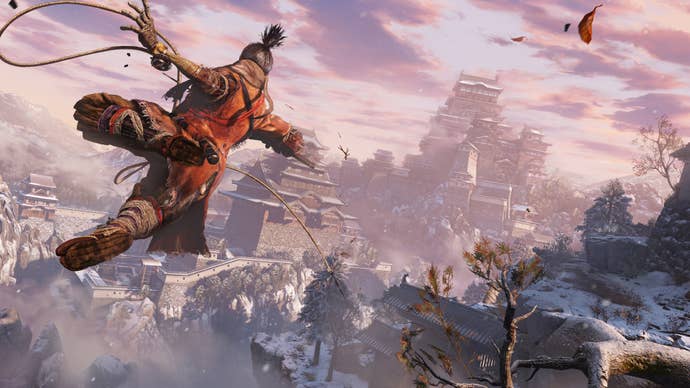
USGamer: So, what was the impetus to go to Japan for Sekiro: Shadows Die Twice?
Hidetaka Miyazaki: So, we've had experience with Japanese oriented titles and titles set in Japan. We've made a couple of them. We also published a number of the Tenchu titles. And so this was a natural course of discussion for this new project to take, and we wanted to go back to Japanese inspired design. And this naturally progressed again into the themes and motifs of ninjas [as] something that I wanted to personally explore. And so this was, again, a natural part of discussion and became the groundwork for the design.
What specifically about ninjas and ninja history fascinates you? Was there anything you specifically wanted to explore with ninjas?
HM: So, when you say “Japanese inspired” you can usually go one of two major directions: one's samurai and one's ninja. And the reason we decided to go with ninja is that samurai is generally more grounded, more fixed. They fight on the ground. Ninjas—at least as far as a Japanese person is concerned—can pretty much do anything they want, and we can go anywhere with the design. Ninja is fantasy.
With ninjas in Sekiro, one of the new abilities is jumping. Will that add a lot of verticality to the levels as a result?
HM: Three-dimensional maps [that have] a lot of verticality to them is something that we've pursued in our level design in previous titles. And having this more of a three-dimensional vertical way of traversal has been something that I've wanted to try for a while now. Obviously with Dark Souls and Bloodborne you have these nice, 3D spatial maps but the only way you can go up and down is by stairs or ladders. This time we have the jump mechanic, we have the grappling hook, so we're allowed to more freely explore these worlds.
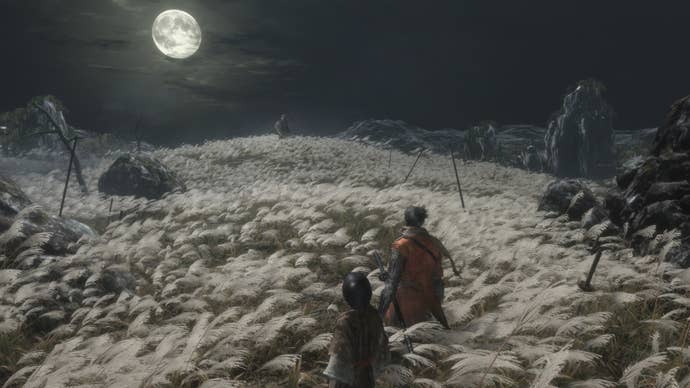
Correct me if I'm wrong, but there's no PvP in Sekiro. Can you explain why there isn’t?
HM: So, one of the main reasons was—this was again explored with the development staff on the development floor—but we felt that by concentrating on a more single-player geared experience, we wouldn't have a lot of the restrictions that came with a multiplayer framework. This allowed us to explore a fixed protagonist. [It's] allowed us to concentrate on that one single-player class of the ninja, [to] have the player roleplay the ninja and various other factors as well. But this allowed us to really hone in on a single-player experience and create a new level of enjoyment based on that.
So because there's a fixed protagonist, can we expect a more straightforward story? Typically with Dark Souls and Bloodborne the narrative is a bit more atmospheric.
HM: So first of all, if what you’re asking is: is it going to be easy to understand? We would say "yes," at least initially. There are some themes and motifs particularly tied to using a fixed protagonist that allows us to explore him as a character a lot easier. It allows for a different way for storytelling which was not really possible with our previous games which did not have a fixed protagonist.
So when we say it's going to be easier to understand, we do of course mean compared to our previous titles, not necessarily the rest of the game industry. We think it will be easier to approach in that sense. But in terms of narrative and how we tell the story we don't wish to put a bind on the player, and we don't wish this to be a story driven product. We still want to have that atmospheric narrative to it. That's not going to change too much. Our stance has not changed too much from previous titles but hopefully with the fixed character and more of an exploration of each of these major characters, then it will be a little bit more easily approachable.
Based on what we've seen of Sekiro so far from the trailer, would it be fair to say combat will be closer to that in Bloodborne than Dark Souls?
HM: If you had to pick one or the other, then it's definitely closer to Bloodborne, but actually we don't think it's too similar to either of these. We think it's quite fresh.
In terms of combat, the idea is not to gradually chip down your opponent's health. It's a battle of postures. And so the idea is to wear down their posture, throw them off balance, and look for that one single opening—that one single chink in the armor—and lay in the finishing blow. So that's the general approach of this combat system.
We are really putting a high focus on this "anything goes" approach of a ninja. You can use stealth, you can attack from above, you can use the shinobi prosthetic tools. There's a multitude of ways you can approach each encounter and we hope that allows for a lot more strategic opportunities for the player.
We think if you are the kind of player who likes to go in head on and just use, you know, blade to blade combat, [then] it's going to feel a bit closer to Bloodborne. It's going to be very speedy, very mobile, and perhaps even more exciting this time.

So will players be able to specialize in spells or special weapons?
HM: Do you mean in terms of character builds?
More like just the weapons you can use throughout the game.
HM: The vast majority of the variation in builds, if you will, or weapon play style, comes from the shinobi prosthetic and the various tools associated with that. So there are tools that will act as a weapon, there are ones that will act more as a utility tool. But we hope and expect players to utilize everything in their arsenal, and [use] every one of these tools [to] adapt to each situation accordingly.
Then your primary weapon will just be limited to a katana then?
HM: Yes, essentially. It's just the single katana you will use in the right hand, coupled with the shinobi prosthetic on the left. But we intend to implement a number of sword styles you can potentially learn in skills. So the player will hopefully be able to switch up how they use the katana.
It seems that we're approaching the next generation of consoles. Are you excited for updated hardware and what will that mean for FromSoftware?
HM: Of course. This is different from the Sekiro discussion in particular, but yes. Personally, I really like new hardware and new game consoles. As a developer it helps me explore new ideas. I think game design and game development relies a lot on new technology for a new impetus and [for] new design decisions to be made, and just opening up new possibilities. So of course, I want to release on whatever's next.


